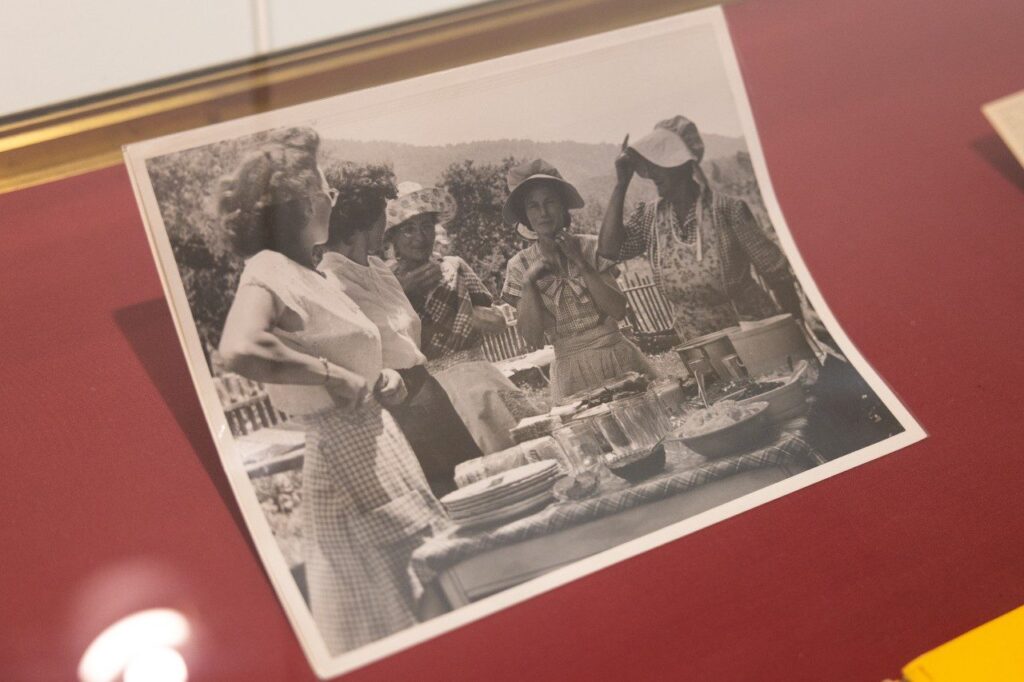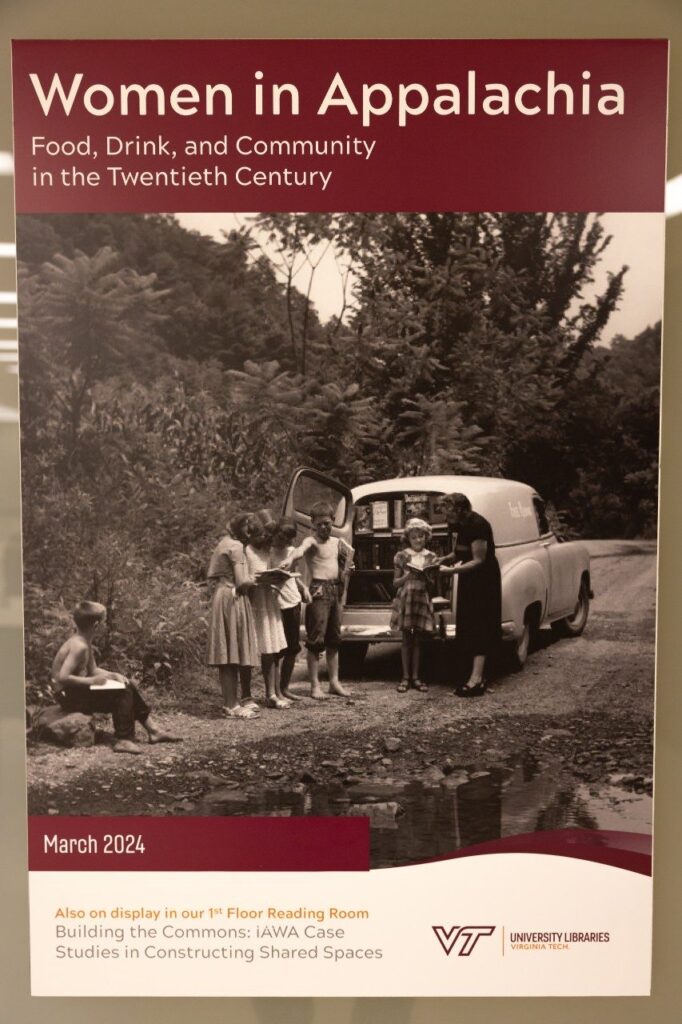Her masters’ degree thesis is based on her research about Appalachian women during the West Virginia mine wars in the 1910s, when coal miners attempted to unionize. Life was hard, but many of the women describe these times as the best in their lives.
Why?
“It has to do with the community they built with each other. Many lived in tents with dirt floors, but they could gather with other women and share the load of cooking, child care, and other household tasks. They connected,” said Harless. “I created the exhibit from the research I’m already doing to give library visitors a broader idea of the life and role of women in Appalachia through the decades.”
The exhibit highlights a slice of women’s history in the Appalachian region focusing on food, crafting, and activism.
“The best part about creating this exhibit is thinking about the story I want to tell,” said Harless. “Each section tells a story about their lives with the thread of community connecting them.”

Food and community
“Through the tough times, they worked together to make it by community gardening and cooking,” said Harless. “They relied on each other as much as themselves and were generous with their knowledge and time.”
Recipe sharing created a sense of community through the sharing of knowledge. The exhibit features handwritten recipe cards with information about the cook and her kin. Black-and-white photographs of the apple butter-making process from picking apples to carrying full baskets to the large iron pot placed over an open fire. Even moonshine recipes and histories illuminate the experiences and traditions of generations.
Artifacts such as a 2-foot-tall blue and white metal coffee pot, a Norfolk and Western Railway bowl and saucer, and a well-used cast iron skillet tell the story of gatherings, special events, and the role food played in fostering friendship.
Crafts and caring
Appalachian women were hard-working and caring. They shared their knowledge of recipes, yarn dying, sewing, and quilting.
The women would come together for potluck quilting parties sharing their creativity and knowledge and showing off their favorite meal recipes. During these events, women would find the friendship, community, and support that made life fun. There were competitions for the prettiest and best workmanship. Many would donate their winnings to their church for a new carpet or other improvements.

Making a difference
The exhibit also describes women’s activism as community members and caregivers in Appalachia. They were just as aggressive as men as they stood up for coal miners’ rights and protested on picket lines alongside husbands, fathers, and sons.
Montgomery County librarians created a bookmobile to reach children along the mountainous roads of Southwest Virginia. Many of the books were donated by community members, and the children kept them until the bookmobile returned to their area.
“The bookmobile demonstrates the community activism of women librarians’ dedication to sharing books and knowledge with rural families,” said Harless.
From the past to the future
Harless will graduate in May with the stories of the past melding with her future ambitions.
“As a graduate assistant in the University Libraries, I’ve been able to dig into the archives and tell these important stories of strong and determined women,” said Harless. “In the future, I want to work with a historical society or museum to continue to highlight stories through exhibits and programs.”
– Ann Brown

